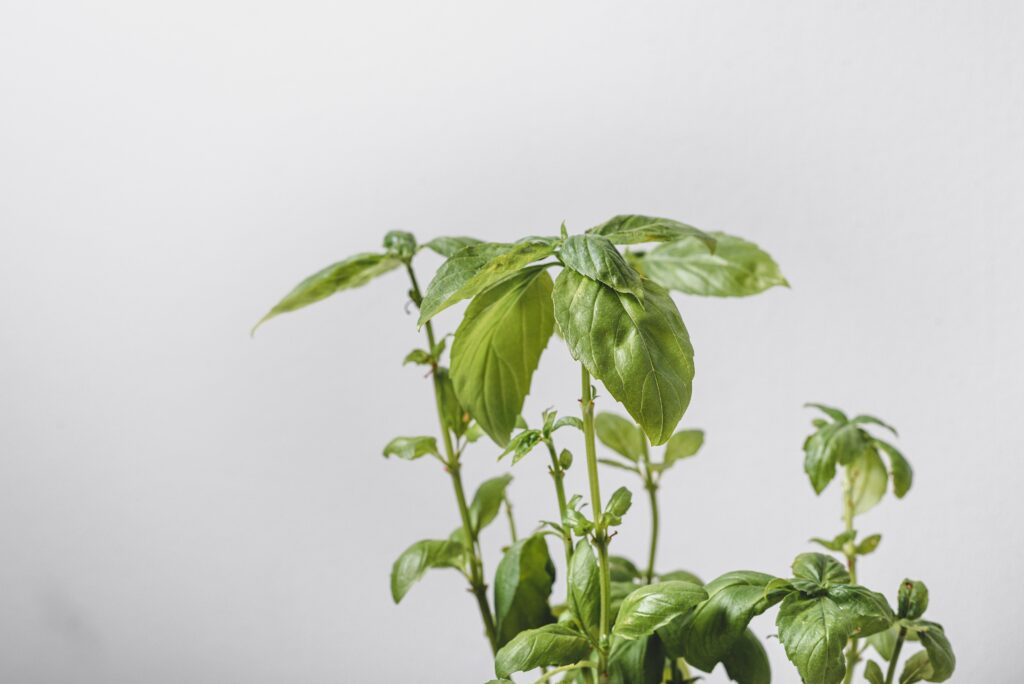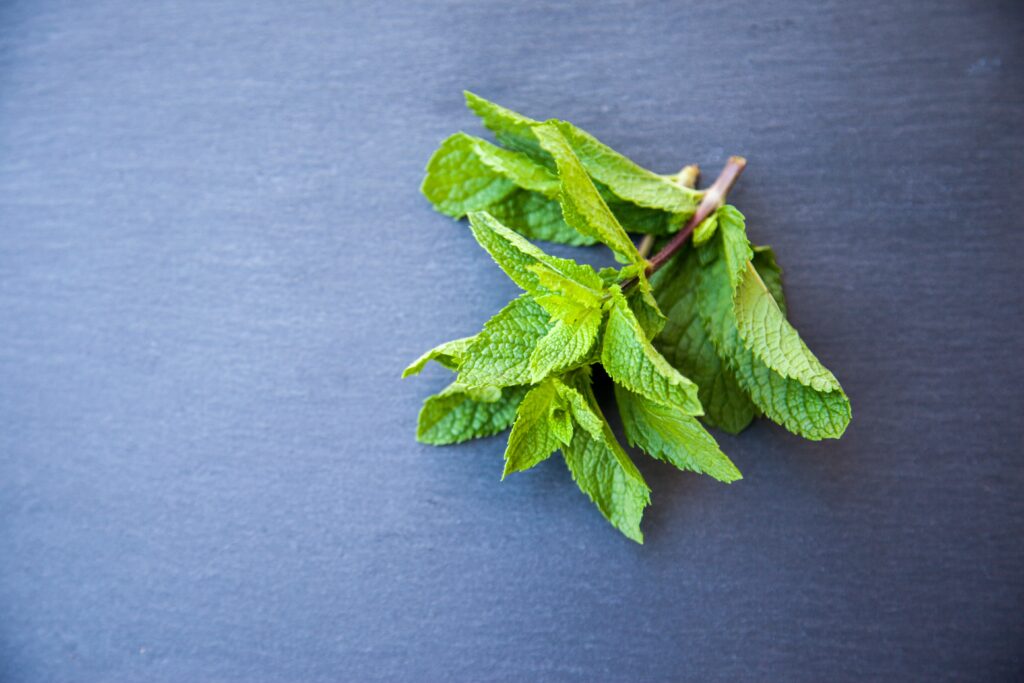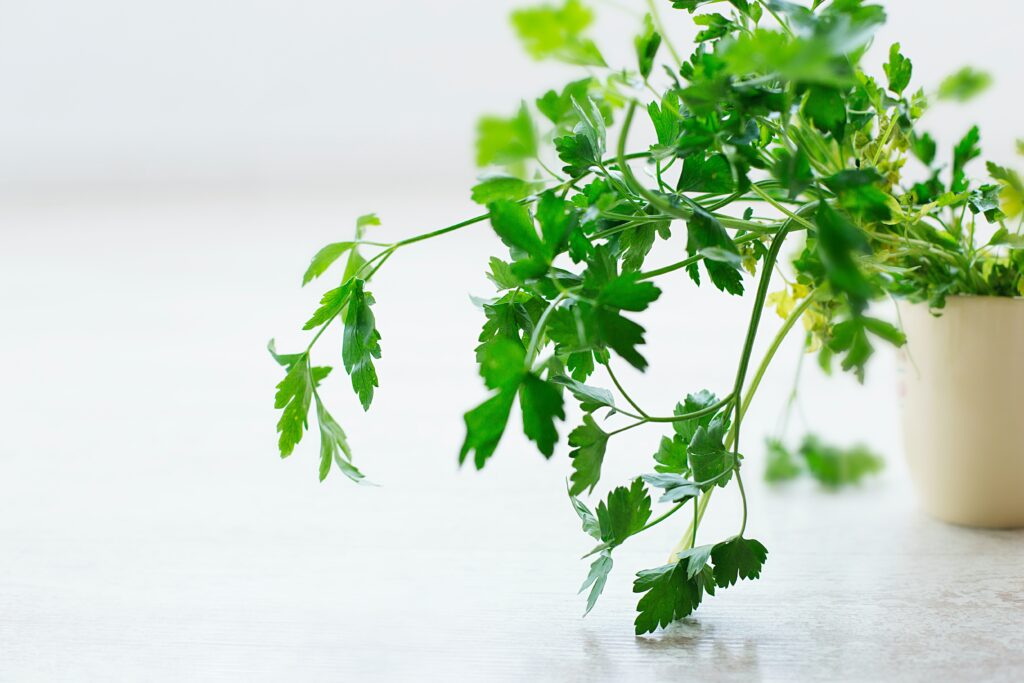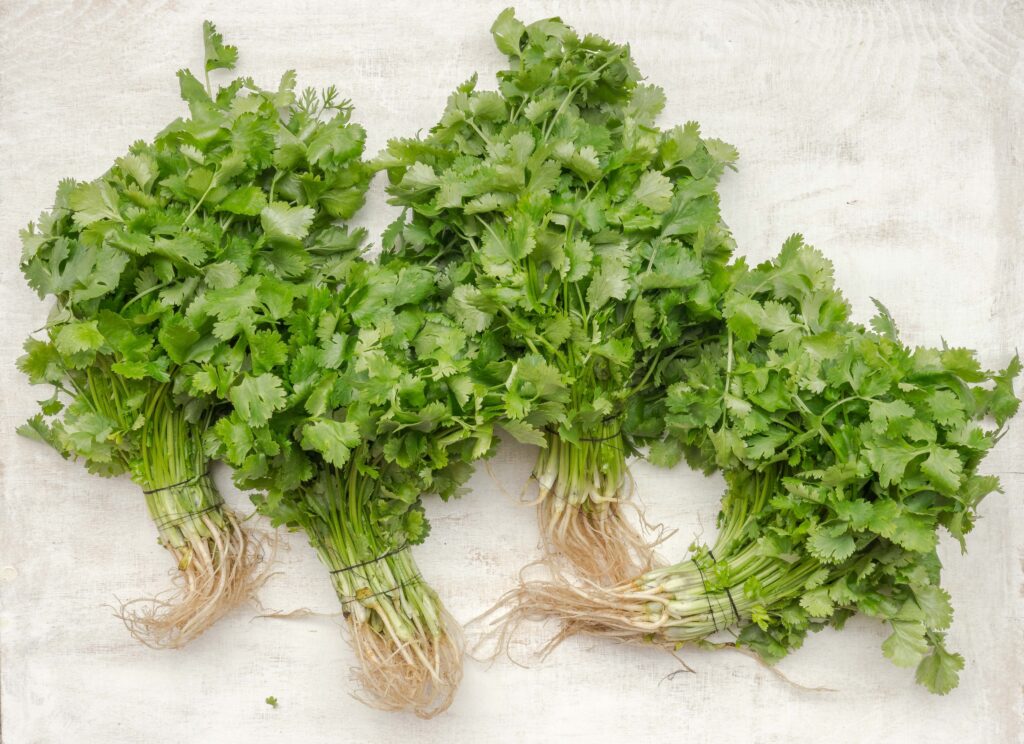Growing herbs and spices in an aquaponics system is the ultimate way to enjoy organic, flavorful ingredients while also learning about sustainable food production. Aquaponics combines hydroponics (growing plants without soil) and aquaculture (fish farming) to create a symbiotic ecosystem that benefits both plants and fish.
In this comprehensive guide from Aquaponics Master, we’ll cover everything you need to know about aquaponically cultivating herbs and spices in your own backyard or indoor space.
Introduction to Growing Herbs Aquaponically
Aquaponics provides the ideal conditions for growing vibrant herbs and spices sustainably and organically. Here’s a quick overview of how it works:
- Fish live in tanks and produce waste that gets converted by beneficial bacteria into nitrates and nitrites – nutrients that plants need to thrive.
- The nutrient-rich water gets pumped from the fish tanks into grow beds or channels where plants can absorb these essential elements.
- The plants extract the nutrients and help purify the water, which then gets recirculated back into the fish tanks.
This closed-loop system allows plants and fish to thrive symbiotically by sharing resources. Aquaponics eliminates the need for soil and artificial fertilizers. You’re effectively growing organic herbs and veggies out of fish poop!
Plus, aquaponics allows year-round harvests no matter the climate since systems can be set up anywhere – indoors or outdoors. The enclosed environment also prevents contamination from airborne pests, diseases, and pollutants.
Let’s explore all the reasons aquaponically grown herbs and spices are the best, and how you can cultivate them yourself through this innovative gardening method.
Advantages of Growing Herbs Aquaponically
Growing herbs in an aquaponic system offers many benefits over traditional soil gardening:
Year-Round Yields
Forget being limited by short outdoor growing seasons. With aquaponics, you can enjoy fresh herbs regardless of weather or season. Systems can be set up indoors or outdoors to allow production year-round.
You can grow basil in winter and parsley in summer – no need to wait for the right time of year. Take advantage of optimal indoor conditions to keep harvesting great flavors all year.
Highly Efficient Use of Space and Water
Aquaponics produces up to 10 times more herbs and veggies per square foot compared to soil gardening. The vertical space above grow beds can also be utilized with stacked levels.
And 90% less water is required thanks to the closed-loop recirculating system between fish tanks and plant beds. The same water gets repeatedly reused rather than drained off like in soil gardening.
By leveraging both space and water efficiency, aquaponics allows for bountiful harvests.
Completely Organic Plants
No need for pesticides, chemical fertilizers, or other harsh substances – plants thrive on natural nutrients from fish waste converted by bacteria. You get pure, organic herbs and vegetables.
Aquaponically grown plants are guaranteed healthy and safe to eat. Avoiding synthetic inputs suits those seeking clean, green living.
Eliminates Soil-Borne Diseases
Growing in water instead of soil prevents contamination by soil-borne diseases and pests. Plants grow healthier without exposure to soil pathogens.
Issues like fungus gnats, root rot, and nematodes can’t infect plants in an aquaponics system. You avoid losing plants or crops to common soil diseases.
Lower Risk of Failed Crops
The controlled aquaponics environment reduces the risk of crop failures from drought, flooding, cold snaps, hail, and other weather extremes.
Indoor systems are completely protected from unpredictable elements. Outdoor systems may see reduced yields but are less vulnerable than soil gardens.
You get reliable harvests season after season with fewer losses.
Reduced Workload
No weeding, tilling, heavy digging, or dealing with poor soil quality. Aquaponics saves you labor compared to traditional gardening.
Once up and running, aquaponic systems take less physical effort to maintain high productivity. You’ll enjoy the process more!
Self-Sufficient Organic Home Growing
Grow your own herbs, vegetables, and even fruit organically at home without relying on stores. Use aquaponics to take food supply into your own hands.
Gain peace of mind knowing exactly where your food comes from and what goes into it. Share the bounty with family and friends.
Educational Opportunity
Aquaponics provides hands-on learning about small-scale food production and regenerative agriculture.
Understand firsthand how to balance an ecosystem for optimal plant and fish growth. Engage kids by getting them involved.
Community Building
Share your aquaponic gardening journey and connect with others doing the same. Trade varieties of herbs and veggies.
Joining a local or online community around aquaponics allows you to exchange knowledge and support others.
You get higher yields of vibrant plants while using fewer resources. Aquaponics is sustainable, efficient gardening at its finest!
Key Considerations for Growing Herbs Aquaponically
While aquaponics provides an ideal setup for cultivating herbs, you need to consider a few factors:
Indoor vs. Outdoor Systems
- Outdoor systems can be larger, but are impacted by climate extremes.
- Indoor systems allow year-round growing in any weather, but require lighting.
Assess your climate, space constraints, and goals. Often a combined approach utilizing greenhouses, cold frames, and indoor systems yields maximum harvests.
Type of Aquaponics System
- Media-filled beds vs. NFT channels vs. vertical towers, etc.
- Consider size, footprint, budget and types of plants.
Match system type to available space, production goals, and growth needs of particular herbs. Tailor it to your unique situation.
Herb Varieties to Grow
- Choose herbs suited to aquaponics like basil, mint, oregano, thyme.
- Consider water, lighting and nutrient needs, growth rate and size.
Select productive, robust herb varieties that will thrive in your system’s conditions. Favorites include Genovese basil, curly parsley, English thyme.
Choosing Fish Species
- Popular choices: tilapia, koi, goldfish, trout, perch, catfish.
- Consider water needs and local regulations.
- Ratio of 1 fish per 2-5 plants recommended.
Choose fish suited to your climate that will integrate well into the aquaponic ecosystem. Tilapia are a top warm climate choice.
Supplemental Nutrients
- May need additional macro/micronutrients if fish feed isn’t meeting plant needs.
- Assess if any deficiencies are present and correct accordingly.
Provide extra nutrients through organic liquid fertilizers if needed to prevent stunted growth.
Pest and Disease Prevention
- Introduce beneficial insects to control potential pest issues naturally.
- Adjust conditions like moisture, nutrients, light to inhibit diseases.
- Quarantine and remove infected plants to prevent spreading.
Maintain vigilant observation to keep ahead of any pest or disease issues through integrated pest management.
Take these factors into account when designing your ideal home aquaponics herb garden. Getting set up correctly will lead to success.
Best Herbs and Spices to Grow Aquaponically
Many herbs and spices will thrive in an aquaponics system. Here are some of the top choices:
Basil

Health Benefits: Antioxidants, anti-inflammatory, antimicrobial. Promotes heart health.
Growing Tips: Grows rapidly indoors or out. Likes warm temps (70°F+). Susceptible to fungus – space plants for airflow. Pinch off flowers to prolong harvest.
Varieties: Genovese, Purple Opal, Lime, Thai
Mint

Health Benefits: Aids digestion, relieves headaches, antioxidants.
Growing Tips: Grows vigorously – isolate or containerize to prevent spread. Likes consistent moisture. Cut often to promote regrowth.
Varieties: Peppermint, spearmint, chocolate mint, orange mint
Oregano

Health Benefits: Antioxidants and antibacterial properties. Eases digestion and respiratory issues.
Growing Tips: Likes hot, dry conditions and full sun. Cut leaves just above leaf joints before flowers appear. Greek varieties recommended.
Varieties: Greek, Italian, Hot & Spicy
Rosemary

Health Benefits: Boosts memory, aids digestion, antiseptic uses.
Growing Tips: Likes hot, dry climates. Cut stems just above leaf joint to encourage bushy growth. Bring indoors in winter.
Varieties: Tuscan Blue, Arp, Barbeque
Thyme

Health Benefits: Antioxidant, antimicrobial, antifungal. Eases coughs and congestion.
Growing Tips: Likes hot, dry conditions and full sun. Cut stems by 1/3rd to shape and encourage new growth.
Varieties: English, French, Lemon, Caraway
Sage

Health Benefits: Anti-inflammatory, aids memory and oral health.
Growing Tips: Likes warmer temps and lots of sun. Prune often for bushier growth. Bring inside for winter.
Varieties: Garden Sage, Purple Sage, Golden Sage
Parsley

Health Benefits: Excellent source of vitamins A, C, K. Anti-inflammatory.
Growing Tips: Grows well in cool weather. Cut often to encourage regrowth. Moist soil.
Varieties: Curly, Italian Flat Leaf
Chives

Health Benefits: Antimicrobial and heart healthy. Loaded with vitamins.
Growing Tips: Extremely hardy perennial. Divide clumps every few years. Cut leaves 2 inches above soil.
Varieties: Common, Garlic
Cilantro

Health Benefits: Removes heavy metals, antioxidant, anti-inflammatory. Promotes heart, brain, and skin health.
Growing Tips: Quick growing but bolts fast. Make successive sowings for continual harvest. Cut outer leaves only.
Varieties: Slow Bolt, Santo, Calypso
This covers some of the most popular and beneficial herbs to grow aquaponically. Experiment with different types to learn what thrives best in your specific system and environment.
Maintaining a Thriving Aquaponics Herb Garden
To keep your aquaponic herbs happy and healthy for continual harvests, it’s important to monitor and maintain the ecosystem. Here are key tasks:
Regularly Check Fish Health
- Ensure fish seem lively and active, not lethargic or gasping at surface.
- Watch for signs of disease like white spots, fraying fins, bulging eyes.
- Remove any deceased fish immediately to avoid contaminating water.
It’s essential to start with high quality fish from a reputable source. Feed them a quality diet and keep tank surfaces clean. Have an isolation tank for any sick fish.
Monitor and Top Up Water Levels
- Check levels daily and top up as needed to replace water lost through absorption and evaporation.
- Ensure water covers pump intakes to prevent running dry and burning out.
Consistent water volume is crucial. Top up with dechlorinated, aerated water that matches system temperature.
Test and Adjust Water Chemistry
- Use test kits to check pH, ammonia, nitrites, nitrates weekly or more often.
- Make any needed adjustments to keep levels in optimal range.
Imbalanced water chemistry stresses plants and fish. Follow organic practices for correcting deviations without chemicals.
Remove Plant Debris
- Prune off any dead or diseased leaves, stems and dispose properly.
- Clear debris to prevent rotting organic matter from accumulating.
Regular pruning improves plant health. Keep grow beds tidy for optimal nutrient flow and aesthetics.
Check Equipment Function
- Ensure water pump, air pump/stones, and other equipment are all running properly.
- Make any repairs or replacements necessary.
Malfunctioning equipment can be disastrous. Monitor function and make fixes before issues arise.
Monitor and Control Water Temperature
- Maintain temperatures optimal for the fish species.
- Make adjustments as needed, especially in extreme weather.
Fluctuating water temp adds stress. Use greenhouse techniques and insulating materials as needed.
Assess Nutrient Levels
- Look for signs of deficiencies in plants like yellowing or stunting.
- Add supplemental organic nutrients if needed for optimal growth.
Fish waste may not provide all macros and micros needed, requiring soil amendments.
Following best practices for aquaponics system maintenance will help your herbs flourish!
Conclusion
Growing herbs and spices aquaponically allows you to enjoy fresh, organic flavors year-round while learning sustainable gardening. With a well-designed and maintained ecosystem, you can continually harvest amazing produce.
This guide covered key considerations like choosing an indoor or outdoor setup, selecting fish species, and which specific herbs grow best. Basil, oregano, thyme, mint and many others can be grown successfully.
We also explored the many advantages of aquaponics like increased yields, efficient resource use, and organic practices. And tips were provided for monitoring each component to maintain balance.
With a properly managed aquaponics environment, you can become self-sufficient in producing the healthiest, most flavorful herbs and spices possible. Your cooking will benefit enormously, and you’ll gain knowledge of small-scale food production.
Aquaponics allows anyone, even without previous gardening experience, to become a successful herb grower! It is an extremely rewarding process.
For more information:
- Check out our Aquaponics Book Store for resources on getting started.
- Browse our Products Shop for aquaponics kits, system components, and supplies to build your own system.
- Engage with our active Aquaponics Community to ask questions and exchange tips with fellow enthusiasts.
Explore More on Aquaponics
If you’ve enjoyed diving into the world of aquaponically growing herbs and spices, we’ve got even more for you to explore. Check out these detailed guides that take you deeper into specific areas of aquaponics:
- Growing Fresh Basil, Mint, and Oregano in Your Aquaponics Garden: A Flavorful Journey – Discover the health benefits, growing tips, and culinary uses of these popular herbs. Add some flavor to your life!
- Mastering Your Aquaponics System: A Comprehensive Guide to Maintenance and Monitoring – Keep your aquaponics system thriving with this in-depth guide to maintenance and monitoring. Learn the secrets to success!
Whether you’re a seasoned gardener or just starting your aquaponics journey, these guides offer valuable insights and tips to enhance your experience. Happy gardening, and let us know how your aquaponic herb gardens progress!

